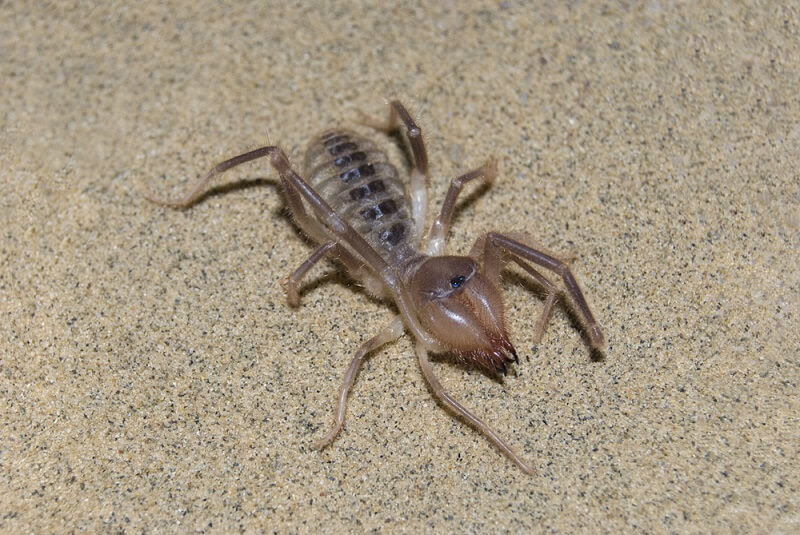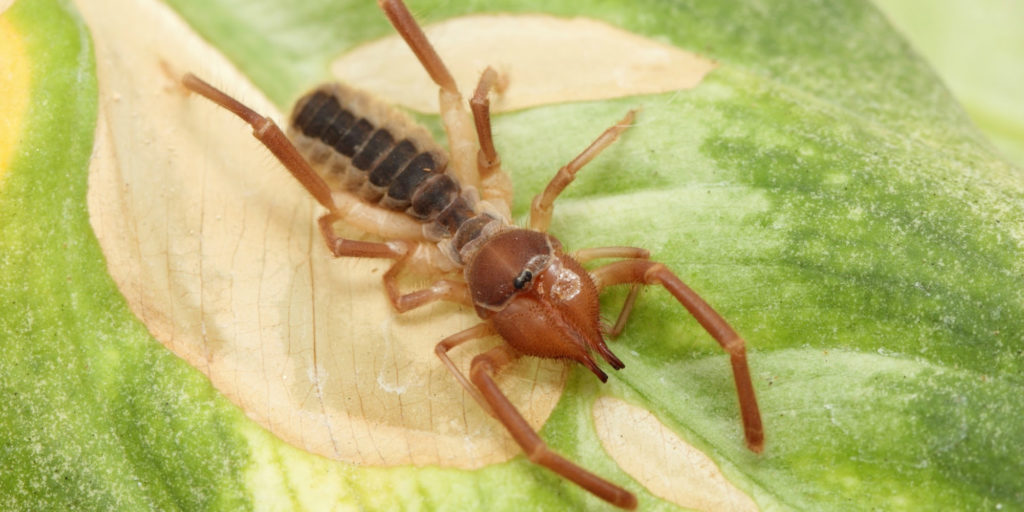Welcome Back to the Lab!
We’ve finally reached sunshine season! Well, kind of. We’ve reached that season where the sun comes out and gives one the sense that spring is coming, then retreats into winter mode within 24 hours (or less). At the time of writing, it is sunny, almost-sweater weather. By the time you read this, it could be snowing. Either way, I’ve got sun on the brain, so what could be more appropriate than revisiting sun spiders?

Solifugids (better known as camel spiders, wind scorpions, or sun spiders) are subject to many misconceptions and are regarded as vicious, lightning-fast predators. While they are predators, and they can be extremely fast (clocking in at 10 mph) they are not a threat to humans.
The appearance of camel spiders can be somewhat alarming; they resemble spiders, but something’s… off. They appear to have 5 pairs of legs, but the large pair near their chelicerae are actually their pedipalps – leg-like projections that help them manipulate their food items. The chelicerae are MASSIVE, further contributing to their frightful reputation. The chelicerae are powerful, but resemble the mouthparts of scorpions and harvestmen; this means they have no fangs, which makes them – you guessed it – nonvenomous.

The word “Solifugid” has latin roots, meaning “those that flee from the sun.” They will actively seek shade, including the shadow of a person; this shade-seeking behavior is another contributor to their fierce-some reputation. Many people have reported being chased down by a camel spider, when in fact, it was only after some relief from the sun.

Many northwestern folks, myself included, were unaware of the existence of camel spiders until 2008, when a photo began circulating of an American soldier holding what looked to be two GIANT solifugids. You know the one. While alarming at first glance, the photo is just a great example of forced perspective; camel spiders max out at about 5 inches long, not a foot. But if you came here hoping to find a photo of the world’s largest camel spider, then look no further:

You’re welcome.
Until next time, thanks for visiting the lab!
Bug Wrangler Brenna
brenna@missoulabutterflyhouse.org